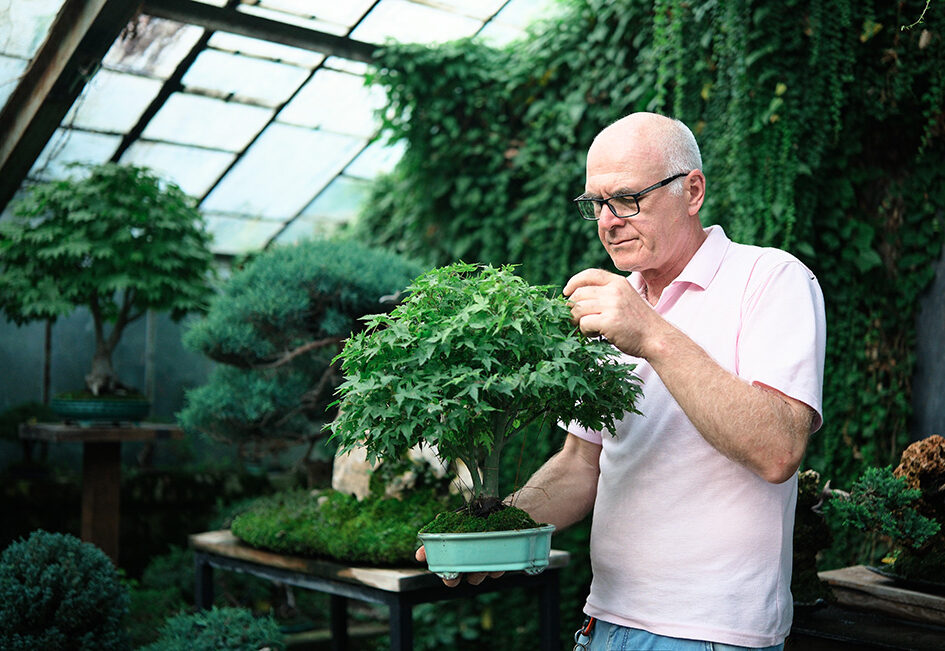This chapter contains several important rules that are essential to know when working with bonsai. Any rule or principle written for shaping should not be considered an absolutely mandatory and strict law. These rules can only be viewed as advice for those who are trying to grow bonsai. As for care: special attention must be given to plant care. The selection of location, watering, fertilizing, repotting, and protection from pests and diseases must be done correctly. Otherwise, the time and energy spent on shaping will be in vain. As a result of improper care, the plant will usually become ill and quickly lose its beauty.
Care
To acquire a bonsai, choose trees that grow in the local climatic conditions.
Place the bonsai in a location where appropriate lighting will be provided.
The bonsai should not be placed directly on the ground permanently.
In winter, do not place the bonsai in a warm environment (except for indoor bonsai); bonsai is a regular tree and seasonal changes are essential for it.
Water the bonsai only when necessary, not according to a strict schedule.
Regularly mist the bonsai in summer, for both coniferous and deciduous trees.
Do not place the bonsai on surfaces that get too hot in summer (stone, concrete, metal).
Protect the bonsai from strong winds.
Apply fertilizer regularly.
Do not mix mineral and organic fertilizers together.
Repot the bonsai only during its dormant period.
Do not buy diseased or weak saplings for creating a bonsai.
If symptoms of disease or pests are noticed, treat the plant immediately.
Protect small bonsai from freezing.
Forming
The height of the bonsai should be a maximum of ten times the thickness of the trunk at the roots.
Surface roots should grow from the thickest part of the base of the trunk.
The base of the trunk at the roots should be the thickest part. The thickness should gradually decrease as the height increases.
The place where the trunk bends should not protrude towards the observer. For styles such as Chokkan (直幹), Moyogi (模様木), and Bankan (蟠幹), the apex and base of the trunk should be aligned along one vertical line.
The tree should have only one apex in the Chokkan (直幹) style, and the branching of the trunk should start from the base of the tree, not from higher up. Branches should not cross each other. The largest branches should not grow directly towards the observer; only in the upper 1/3 of the tree's height is it acceptable for branches to face the observer. The first branch should grow at 1/3 of the bonsai's height and be the largest of all the branches.
A part of the crown should be at the back, creating an illusion of depth.
The bonsai should not appear as an oversized "flat" image.
From the bent area of the trunk, the branch should grow outward.
The thickness of the largest branch should not exceed 1/3 of the thickness of the trunk.
A container
For each style, choose a container with the appropriate shape and size.
It is recommended to choose a neutral-colored container, as a striped or "bright" colored container will be too eye-catching.
The container should be made of clay.
The container must have one or more drainage holes.
The container must have feet, at least half a centimeter in height.
Tools
Cutting tools must always be well sharpened.
Clean the tools thoroughly after each use.
Store the tools in a dry place.

